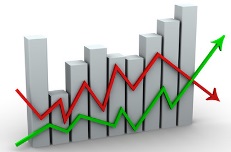As financial advisers, we talk a lot about risk, so what is sequencing risk? Let’s begin with an example… 
Jennifer and Sue each contribute $20,000 per year to their superannuation funds for 10 years. They both earn an average return of 5% per annum, after tax and fees, and from Years Two to Nine they earn identical returns each year. The only difference is that Jennifer’s portfolio returns 8% in the first year and -8% in the last year; whereas Sue’s returns are -8% in Year One, and 8% in Year Ten. This doesn’t seem like much of a change, yet Sue ends up with a balance of $290,514 compared to Jennifer’s $252,177[1]. That’s a substantial difference of $38,337, or 13% less.
This simple example demonstrates that it isn’t just the average of annual returns that matter; of equal importance is the sequence in which those returns occur. Not surprisingly this is called sequencing risk.
The sequence of returns isn’t an issue with a lump sum investment. It’s only of concern when regular contributions and withdrawals are being made. And in the drawdown phase, such as in retirement, positions are reversed. Imagine that Jennifer and Sue both invest the same lump sum into a pension and withdraw $20,000 each year. If they each experience the same sequence of returns as in the first example, this time Jennifer is better off by $38,337 after 10 years.
Dealing with the real world
This may make it appear that with sequencing risk what you lose on the way in, you gain on the way out, but history is unlikely to repeat itself exactly. What is clear is that:
-
Poor portfolio performance at the end of an accumulation phase can be more damaging than poor performance at the start.
-
In the drawdown phase, good returns late in life may not make up for a poor start.
Both points suggest that risk should be reduced well ahead of retirement. For example:
-
Don’t carry any more risk than is necessary. During the accumulation phase, if you reach a point where your savings will allow you to meet your needs with a conservative investment portfolio, start dialling down the risk.
-
Start early. The sooner you start and the more you are able to save in the early years of preparing for your retirement, the sooner you will be able to reduce your exposure to sequencing risk.
-
Build a cash reserve. Aim to have two to three years’ worth of pension payments in the cash component of your superannuation savings by the time you retire. This can reduce the need to sell shares or property during any market downturns.
Achieving the right balance
Reducing sequencing risk usually involves allocating a larger proportion of the investment portfolio to cash and fixed interest. The potential downside of this option is increasing longevity risk – outliving your savings. If sequencing risk catches you out, the alternatives may be to work longer or reduce your living standards.
Investment risk management is a fine balancing act. The right strategy depends very much on individual circumstances. We can assess your situation and develop a risk management strategy that’s right for you.
[1] Results vary significantly depending on specific annual returns.